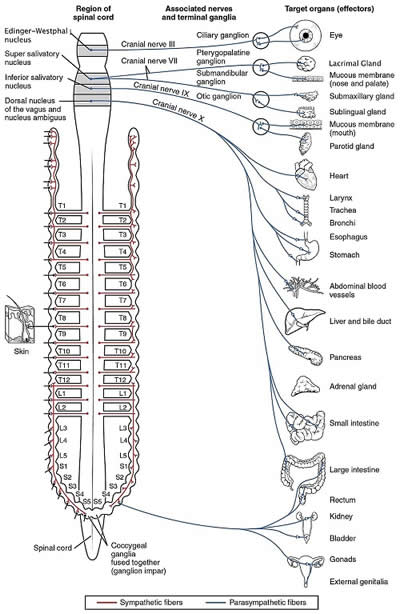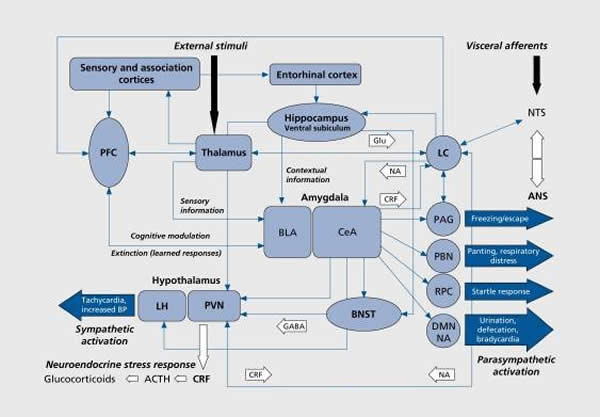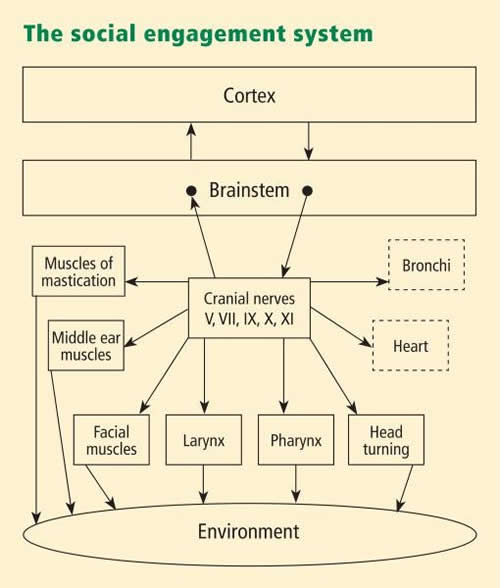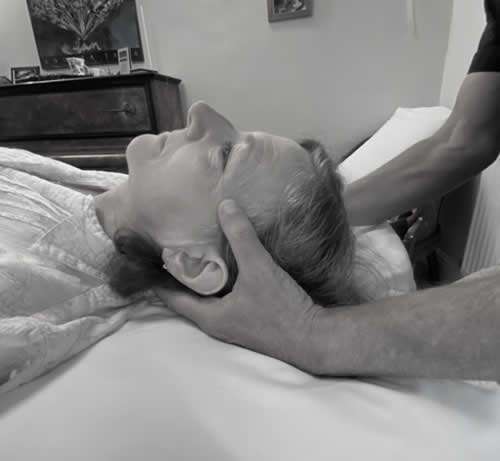Positive Health Online
Your Country

Craniosacral Therapy in the Time of Fear
by Jonathan Lawrence(more info)
listed in craniosacral therapy, originally published in issue 266 - November 2020
Fear in the right context can be very useful. It motivates us to take action to keep us and our loved ones safe. Fear can also be disabling and in a chronic state can impinge on our health and well-being. We are currently living with a great deal of fear some of which may be justified and some not.
We live in time akin to being at war fearing for our lives and those we love. Albeit with an invisible enemy. We fear for our jobs and we fear for the future. We are subject to unprecedented restrictions on how we behave, who we can see and what we can express on social media. The reason? a pandemic. Moreover, a pandemic that that like the previous ones, SARS-Cov-1, MERS and swine flu looks to have been over exaggerated by the modellers informing Government policy.
Thus, fear is engendered aided by government action aimed at scaring the public into compliance; ostensibly to limit the spread of the disease. However, the actions have been so extreme that there are many who fear loss of livelihood such as those running small businesses especially in the catering and leisure industries. Therefore, it is not surprising that patients are presenting with symptoms caused by or exacerbated by fear.
A patient of mine introduced me to Polyvagal Theory and its role in psychological states. She had read a book by a craniosacral practitioner who incorporates these ideas into his treatment and was getting excellent results.[1]
She had been suffering from what she described as an inability to behave proportionately in social situations. She would be too loud and overreact to what she perceived to be slights on her character even when this was clearly not the case. She also felt anxious and frightened even when there was no good reason. She was in her late fifties and she recalled this happening after a period of psychological abuse at the end of a relationship in which she was constantly told that she had no worth. This constant belittling wore her down.
Subsequently this attitude led her to have difficulties in jobs that involved facing the public though she was quite competent and efficient in administrative roles. She had had a number of physical and emotion traumas previously due to a road traffic accident and a skiing injury.
She felt that this traumatic history had unbalanced the way her autonomic nervous system worked and had caused these inappropriate responses. I researched the topic and agreed to work with her on that basis.
I recall in discussion with an experience colleague who believes that all disturbances to the craniosacral system stemmed from shock. This could be physical or mental and emotional. This could also be exogenous or endogenous.
I also recalled a patient in our teaching clinic who had experienced a road traffic accident and had fractured his sternum. As students we were convinced that we would be able to palpate major restriction in the sternum through the CS system. We found in that area at least the tissues felt quite balanced. A quite unexpected finding.
During a lecture in 1991[7] Stuart Korth an expert on paediatric osteopathy remarked how some babies he examined appeared to display very little shock in their systems following a difficult birth. In contrast other who had relatively easy births seemed to need a great deal of treatment. His tentative conclusion was that “..the emotional content of the experience..” was the factor that caused the disturbance in the tissues.
It has been understood in physiology that the autonomic nervous system is divided into two divisions: Sympathetic and parasympathetic. The former is related to fight/flight response and the latter to rest/digest.
Polyvagal Theory, developed by Stephen Porges[6] posits that the major parasympathetic nerve, cranial nerve X, the vagus nerve that innervates most of the organ systems of the body is divided into two parts. The anterior vagus is myelinated and is consistent in function with established ideas of rest/digest and the dorsal vagus which is unmyelinated is related to the reptilian defence mechanism of ‘freezing’ or playing dead.
The theory goes on to posit that under normal conditions the hierarchy of function in the ANS under condition of little stress should be 1. Anterior vagus, 2. Sympathetic nerves and 3. Dorsal vagus.
When dysfunctional, this order is changed, and the individual may be on alert too much-sympathetic dominance or may be in freeze mode – dorsal vagal dominance and be unable to fully function.

Fig 1 Autonomic Nervous System[2]
From the craniosacral therapist’s view point the ANS is nicely laid out (see Fig1) as if designed to be accessible to the practitioner. The parasympathetic system is arranged at the top of the body (vagus) and at the base (sacral outflow). The sympathetic nerves arise as nerve roots from T1-L2.
The system can be rebalanced by treating the cranium and sacrum for the parasympathetic and the thoracic inlet and diaphragm for the sympathetics.
In addition treatment of the brainstem via specific techniques or CV4[8, 9] can work at a deeper level with the vagus, locus coeruleus (Fig 2 and 3) and other cranial nerve nuclei involved with the ANS.

Fig 2 A schematic view of major brain circuits involved in fear and anxiety[3]
“The locus coeruleus is responsible for mediating many of the sympathetic effects during stress. The locus coeruleus is activated by stress, and will respond by increasing norepinephrine secretion, which in turn will alter cognitive function (through the prefrontal cortex), increase motivation (through nucleus accumbens), activate the hypothalamic-pituitary-adrenal axis, and increase the sympathetic discharge/inhibit parasympathetic tone (through the brainstem). Specific to the activation of the hypothalamic-pituitary adrenal axis, norepinephrine will stimulate the secretion of corticotropin-releasing factor from the hypothalamus, that induces adrenocorticotropic hormone release from the anterior pituitary and subsequent cortisol synthesis in the adrenal glands. Norepinephrine released from locus coeruleus will feedback to inhibit its production, and corticotropin-releasing factor will feedback to inhibit its production, while positively feeding to the locus coeruleus to increase norepinephrine production.
“The LC's role in cognitive function in relation to stress is complex and multi-modal. Norepinephrine released from the LC can act on α2 receptors to increase working memory, or an excess of NE may decrease working memory by binding to the lower-affinity α1 receptors.
"Psychiatric research has documented that enhanced noradrenergic postsynaptic responsiveness in the neuronal pathway (brain circuit) that originates in the locus coeruleus and ends in the basolateral nucleus of the amygdala is a major factor in the pathophysiology of most stress-induced fear-circuitry disorders and especially in posttraumatic stress disorder (PTSD). The LC neurons are probably the origin of the first or second "leg" of the "PTSD circuit." An important 2005 study of deceased American army veterans from World War II has shown combat-related PTSD to be associated with a post-mortem diminished number of neurons in the locus coeruleus (LC) on the right side of the brain”.[3]
_efferent_pathways_and_relevant_functions_650x483px.jpg)
Fig 3 Locus coeruleus (LC) efferent pathways and relevant functions.[4]
“The social communication system involves the myelinated vagus, which serves to foster calm behavioural states by inhibiting sympathetic influences to the heart and dampening the hypothalamic-pituitary-adrenal (HPA) axis. The mobilization system is dependent on the functioning of the sympathetic nervous system. The most phylo-genetically primitive component, the immobilization system, is dependent on the unmyelinated vagus, which is shared with most vertebrates.”[4]
Thus the anterior (myelinated vagus) functions:
“With increased neural complexity resulting from phylogenetic development, the organism's behavioural and affective repertoire is enriched. The three circuits can be conceptualized as dynamic, providing adaptive responses to safe, dangerous, and life-threatening events and contexts.”
In Rosenberg’s book[1] he shows how disturbance of the dorsal and vagus in particular and the autonomic nervous system in general can affect the functioning of other cranial nerves (V,VII, IX, XI) whose nuclei are in the brainstem.[Fig 2]

Fig 4 The Social Engagement System[5]
The simplest craniosacral technique for modulating the ANS is the CV4. This works specifically in the area of the brainstem making adjustments via still points. The still point is where for a short period of time, often less than a second, the motion of the CSF which normally in constant flux, ceases. Homeostatic adjustment occurs and the system then regains improved motion and improved function thus helping rebalance the ANS.

Fig 5 CV4 being performed.
In addition to regulating the autonomic nervous system, CV4 modulates the lymphatic system, blood pressure, heart rate and inflammation among others.
I have been working with my patient using these techniques and she has made remarkable progress to the point where she only needs to come every three months.
She does the CV4 self-help[9] daily and she does the basic exercise as designed by Rosenberg to reconfigure the ANS hierarchy as necessary.[10]
To come back to the present time when stress and fear are activating and sometimes even creating imbalances within the ANS for many of us leading to feeling of stress, depression, anxiety and social dislocation. We have some effective tools to manage and treat these issues through craniosacral therapy and CS self-help techniques.
References
- Rosenberg, S. (2017). Accessing The Healing Power Of The Vagus Nerve : self-exercises for anxiety, depression, trauma,... and autism. S.L.: Readhowyouwant Com Ltd. Amazon.co.uk. 2017.
- https://en.wikipedia.org/wiki/Autonomic_nervous_system#/media/File:1503_Connections_of_the_Parasympathetic_Nervous_System.jpg
- https://www.ncbi.nlm.nih.gov/pmc/articles/PMC3181681/figure/DialoguesClinNeurosci-4-231-g001/
- (2) https://www.researchgate.net/figure/Locus-coeruleus-LC-efferent-pathways-and-relevant-functions-LC-projects-throughout-the_fig1_338194613
- https://en.wikipedia.org/wiki/Locus_coeruleus
- https://www.ncbi.nlm.nih.gov/pmc/articles/PMC3108032/
- Lecture at University of Exeter by Stuart Korth DO DPO FICO, Co-founder and Director of Osteopathy of the renowned Foundation for Paediatric Osteopathy, September 1991.
- https://youtu.be/tkQEm56HP_c
- https://youtu.be/Psiv2BgyGIs
- https://youtu.be/-CKxRkZ6Ynw
Comments:
-
No Article Comments available